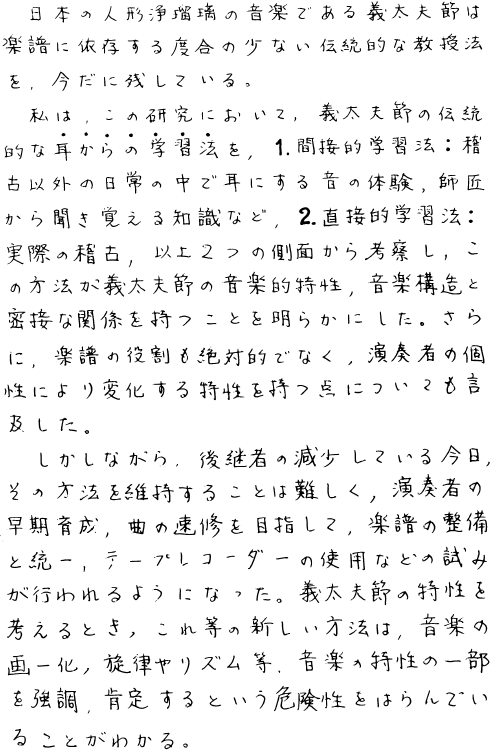No CrossRef data available.
Published online by Cambridge University Press: 07 March 2019
Gidayū-bushi, the music of the bunraku puppet theatre, was systematized by Takemoto Gidayū in the second half of the 17th century. One of Japan's narrative musical genres (jōruri), gidayū-bushi is customarily performed by a single vocalist accompanied by a single shamisen player (see Figure 1). The tayu (singer) and shamisen player sit at an angle to the front of the stage in order for them to have a clear view of the puppets. The musicians' most important task is to evoke the emotional states depicted by the puppets on stage and, to this end, they are required to master a variety of individual expressive modes which give those emotional states concrete form.
